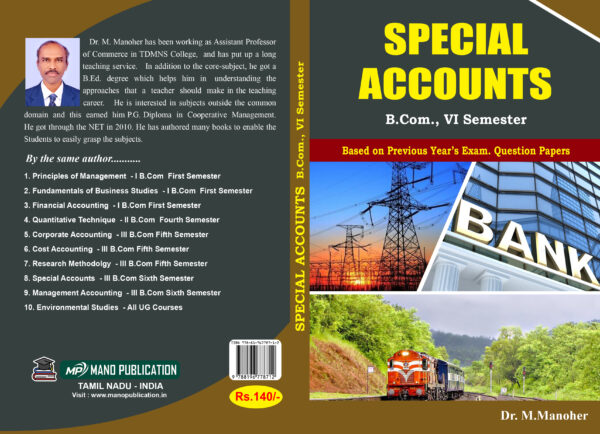Unit I Holding Companies: Introduction-Advantages-Disadvantages-
Wholly –owned Subsidiary Companies-Partly – owned Subsidiary Companies-
Preparation of consolidated Balance Sheet – Elimination of Investment
in Shares-Minority Interest-Cost of Control-Capital and Revenue Profit-
Revaluation of Assets and Liabilities- Elimination of Common Transactions-
Contingency Liabilities- Unrealised Profit-Current Accounts-Bonus Shares-
Treatment of Dividend- Debentures of Subsidiary Company-Preference
Shares in Subsidiary Company- Share Premium-Preliminary Expenses-
Sales of Shares (except intercompany holdings and chain holding).
Unit II Accounts of Banking Companies Introduction-Legal provisions-
Disposal of Non-Banking Assets-Restrictions on Loans – Restrictions on
Commission-Restriction on Payment of Dividend- Management of Minimum
Capital-Statutory Reserve-CRR and SLR-Accounts and Audit – Preparation
of Profit and Loss Account-Balance Sheet as per the III schedule u/s 29 of
the Banking Regulation Act -Money at Call and Short Notice – Advances-
Acceptance Endorsements etc., – Bills for Collection-Bills Payable-Bills
Purchased and Discounted-Rebate on Bills Discounted-Inter Office
Adjustments Slip System.
Unit III Accounts of Insurance Companies Types of Insurance-Annual
Accounts-Life Insurance-Consideration for Annuities Granted-Balance Sheet-
Determination of Profit- Accounts of General Insurance-Reserve for Unexpired
Risk – Preparation of Final Accounts
Unit IV Double Accounting System Introduction-Double Entry System and
Double Account System-Double Account SystemFeatures of Double Account
System-Advantages and Disadvantages-Accounts of Electricity Companies-
Depreciation-Contingencies Reserves-Development Reserve-General
Reserve-Tariff and Dividend Control Reserve-Remuneration – Reasonable
Return-Capital Base-Clear ProfitDisposal of Surplus-Replacement of Assets-
Receipts and Expenditure on Capital Accounts – General Balance Sheet
– Revenue Account – Net Revenue Account – Accounts of Electricity
Companies and Railways – Replacement and Renewals.
Unit V Accounting Standards Accounting Standards – Indian and International
Accounting Standards – Indian Accounting Standards 1,3,6,10,14,21
and 29 – Application – Scope – Formulation – Advantages – Disadvantages
– Challenges – Inflation Accounting Simple Problems only.
Shopping Basket





Reviews
There are no reviews yet.